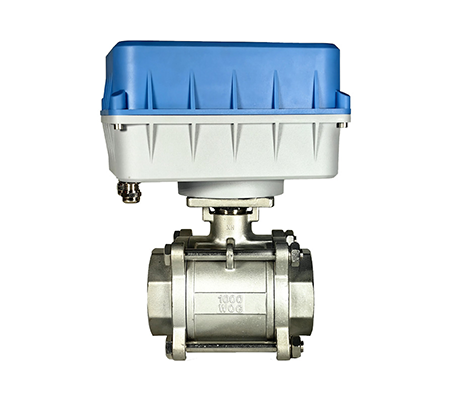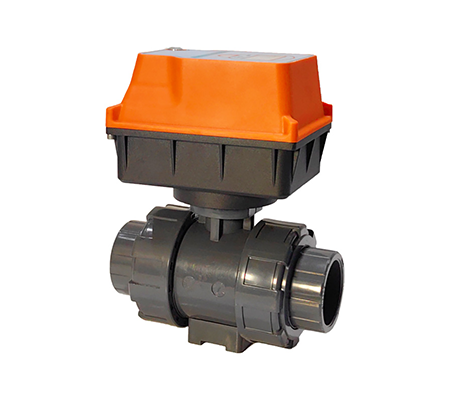Avoid your inquiry is delay response, please enter your WhatsApp/WeChat/Skype along with the message, so we can contact you at the very first time
We will reply you within 24 hours. If for urgent case, please add WhatsApp: +8613188899036, or WeChat: 0531-87968777. Or call 0531-87968777 directly.
* We respect your confidentiality and all information are protected. We will only use your information to respond to your inquiry and will never send unsolicited emails or promotional messages.
Are you tired of wasting energy and money on outdated valve systems? Many building managers and industrial operators face this exact problem every day.
Traditional manual valves require constant attention, adjustment, and maintenance. When they fail, the consequences can be serious – production stops, energy bills skyrocket, and water damage occurs.
Think about what happens when valves aren’t working right. Temperature fluctuations make people uncomfortable. Water pressure issues cause system inefficiency. Energy costs climb month after month. And the worst part? Most people don’t even know there’s a better way.
The good news is that motorized valves provide the perfect solution to these common problems. These smart devices automatically control flow with precision that human operators simply can’t match. Today’s modern systems can cut energy use by up to 30% while extending equipment life and improving comfort.
Let’s explore everything you need to know about these game-changing devices.
A motorized valve is a device that uses electric power to control the flow of liquids or gases in a system. Unlike manual valves that need a person to turn them, motorized valves work on their own when they get a signal.
These smart devices have three main parts:
See our advanced smart valve options for the latest in flow control technology.
The basic job of these valves is to open, close, or adjust flow based on what your system needs. They can be as simple as on/off types or as complex as valves that make tiny adjustments based on changing conditions.

What is a Motorized Valve?
Understanding how these valves work helps you see why they’re so useful. Here’s the simple step-by-step process:
Many motorized valves have fail-safe mechanisms that close or open the valve if power is lost. This safety feature prevents damage or dangerous conditions.
For example, an intelligent valve with LoRaWAN technology can provide remote monitoring and control even in challenging environments.
These versatile devices work in many different settings:
| Industry | Use Case | Common Valve Type |
|---|---|---|
| HVAC | Zone control, chillers | 2-way ball valves |
| Water Treatment | Chemical dosing | Globe valves |
| Industrial | Steam control | Butterfly valves |
| Oil & Gas | Flow regulation | Ball/gate valves |
The market for these valves keeps growing. Reports show the control valve market will reach $13 billion by 2029, growing at 5.4% yearly. Industrial valves will hit $131.6 billion by 2033.
Why such big growth? Because these valves solve real problems. In oil refineries, they’ve cut downtime by 18%. In water plants, smart valves have reduced energy use by 25%.
Picking the right valve can feel hard with so many options. Use this simple checklist to make the best choice:
Critical factors to consider:
Money-saving tip: Match valve material to your fluid. For example, use stainless steel for chemicals that might cause rust.
The best approach is working with experts who understand your specific needs. They can help you pick valves that work right the first time and last for years.
Even the best valves can have problems if not installed right. Here are the top mistakes to avoid:
When problems happen, check these things first:
For smoother operation of flow systems, consider a flow regulating valve designed for precise control.
Not all motorized valves are the same. Here’s how the top brands compare:
| Brand | Best For | Price Range | Warranty |
|---|---|---|---|
| Belimo | HVAC precision | $$$ | 5 years |
| Danfoss | Industrial durability | $$ | 3 years |
| Siemens | Smart building integration | 5 years | |
| Navarch | Complete system solutions | −$ | 5 years |
Navarch stands out by offering not just high-quality valves but complete system integration. With an 8,000-ton annual production capacity across five production lines, they ensure consistent quality and timely delivery.
For water applications specifically, smart water valve options provide advanced control capabilities that standard valves can’t match.
Different applications need different valve designs. Here are the main types:
The motorized ball valve options available today include stainless steel models for durability in challenging environments.

motorized ball valve
Understanding the parts of a motorized valve helps you maintain them better:
This is the main part that holds the fluid. Materials include:
This is the “motor” that makes the valve move:
For specific control needs, a pressure regulating valve can maintain consistent pressure regardless of upstream conditions.
Modern valves connect to:
The newest valves do much more than just open and close. Smart valves can:
Market data shows smart valves now make up 28% of all valve sales and are growing at 7.2% yearly. This isn’t surprising when you see how much money they save.
Advanced electric control valves now incorporate IoT connectivity for real-time monitoring and adjustment.
Motorized valves control:
These valves have reduced HVAC system energy use by up to 30% in many buildings.
In water plants, these valves:
Factories use these valves for:
The oil and gas sector alone drives about 40% of all motorized valve demand.
One of the biggest reasons people switch to motorized valves is to save energy. Here’s how they help:
In real buildings, these savings add up fast. Many systems pay back their cost in energy savings within 2-3 years.
To get the most from your motorized valves:
Working with experienced installers can prevent many common problems and ensure your system works right from day one.
The good news is that motorized valves need less maintenance than manual ones. Still, you should:
Most quality valves will last 10-15 years with basic care. Some, like those made with premium materials and advanced engineering, can last even longer under proper conditions.
When budgeting for motorized valves, think about:
While good valves cost more upfront, they usually save money over their lifetime through better performance and fewer problems.
The motorized valve industry keeps evolving. Watch for these coming changes:
The component market, especially for valve positioners, is growing at 5.6% yearly as demand for precision increases.
What’s the difference between motorized and solenoid valves?
Motorized valves can adjust flow precisely. Solenoid valves just turn on or off.
Can I install a motorized valve myself?
Only if you have electrical and plumbing skills. Otherwise, hire a professional.
How long do motorized valves last?
Quality valves typically last 10-15 years with proper maintenance.
Are motorized valves expensive to run?
No, they use very little electricity and usually save more energy than they use.
Can motorized valves work if power fails?
Many have fail-safe features that move them to a safe position when power is lost.
When selecting motorized valves for your system, remember these key points:
For the most reliable performance, look for manufacturers with proven track records and comprehensive testing. Companies like Navarch, with their focus on research and development, maintain strict quality control with multiple tests before delivery.
Their strategic location in a transportation hub allows for quick response to customer needs, including customized solutions for specific applications.
Motorized valves have transformed how we control flow in buildings and industrial systems. They save energy, improve comfort, extend equipment life, and reduce maintenance needs.
As the market continues growing toward $13 billion by 2029, more innovations will make these valves even smarter and more efficient. The best systems will integrate valves with other building controls to optimize overall performance.
For projects ranging from simple water control to complex industrial systems, working with experienced valve specialists ensures you get the right solution. Your specific needs deserve a customized approach that delivers lasting value.
Browse our complete selection of motorized ball valves to find the perfect solution for your flow control needs.
